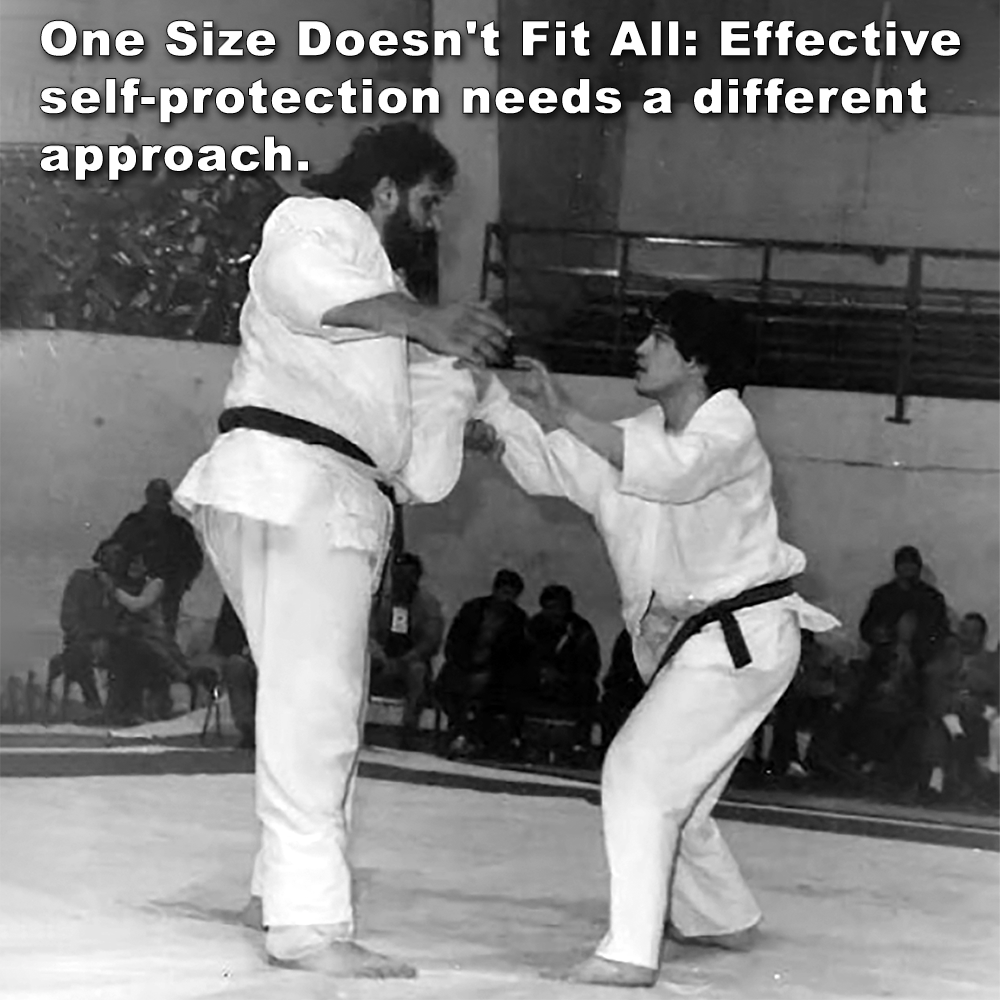
(Approx 2 minute 20 second read)
The term self-defense is frequently used to promote martial arts schools, but do they genuinely offer self-defense, or does it simply label traditional martial arts techniques as a one-size-fits-all solution?
.
People often discuss self-defense and self-protection as if they’re interchangeable. While there are elements that are similar and overlap, I prefer to use the term ‘self-protection’ over self-defense. Self-protection is proactive, where self-defense is reactive. Traditional karate training, for example, tends to fall into the reactive category. Therefore, it’s important to properly define what we are teaching and talking about.
.
In the news today, there was a “black-belt self-defense expert” offering advice to people, showing a pictorial of techniques to use when attacked. One woman who commented said that she tried a “self-defense” class, went home to try the (karate) techniques on her husband, but he simply pinned her to the floor.
.
Those who have been in martial arts for a long time, and maybe those who haven’t, know that it takes a great deal of practice to become proficient in any physical technique.
.
This is one reason why a differentiation should be made between techniques learned in a martial arts school and those used for self-protection.
.
Effective self-protection classes should teach a 280lbs man differently than a 110lbs female, yet most martial arts schools teach everyone the same syllabus. A 280lbs man may not worry about being dragged into the back of a van and attacked, while a 110lbs female may not need advice on how to deal with a fight after a soccer match. Different realistic attack scenarios require different responses.
.
Self-protection training must equip each student with the right tools and techniques that suit their physical and mental makeup. And those tools and techniques certainly shouldn’t begin with typical karate techniques; they need to be relevant to real-world threats and adaptable to diverse situations.
.
The older classical martial arts were developed for civilian protection in times when streetlights, police forces, and laws governing self-defense were nonexistent. However, modern criminal assaults have evolved, rendering many traditional martial arts ineffective against contemporary threats and legal constraints.
.
The skills needed to handle modern-day crimes differ from traditional martial arts techniques, to those required to avoid confrontations with drunks outside a take-away, or to deal with multiple assailants trying to steal your car on a dark street.
.
Effective self-protection requires an understanding of how criminals operate. Techniques geared toward karate-ka vs. karate-ka, the ‘reactive’ part of self-defense, may not be suitable for real-world violence. Also, studying the habitual acts of violence is crucial for developing appropriate training methods. But, this subject is often overlooked in traditional martial arts classes.
.
With various martial arts styles and instructors passing down what they’ve learned without question, there are generations of students who may believe they are prepared for any real-world encounter. However, the reality may be different.
.
While it’s often said that any training is better than none, context is everything. Teaching a 110lbs female and a 280lbs man to fight using the same physical techniques is probably going to do more harm than good.
.
Many martial artists may not be qualified to teach self-protection if they fail to adapt their methods to the diverse needs and threats faced outside of the dojo, as modern karate was not designed for this.
.
Do you believe there is a difference between self-defense and self-protection?
